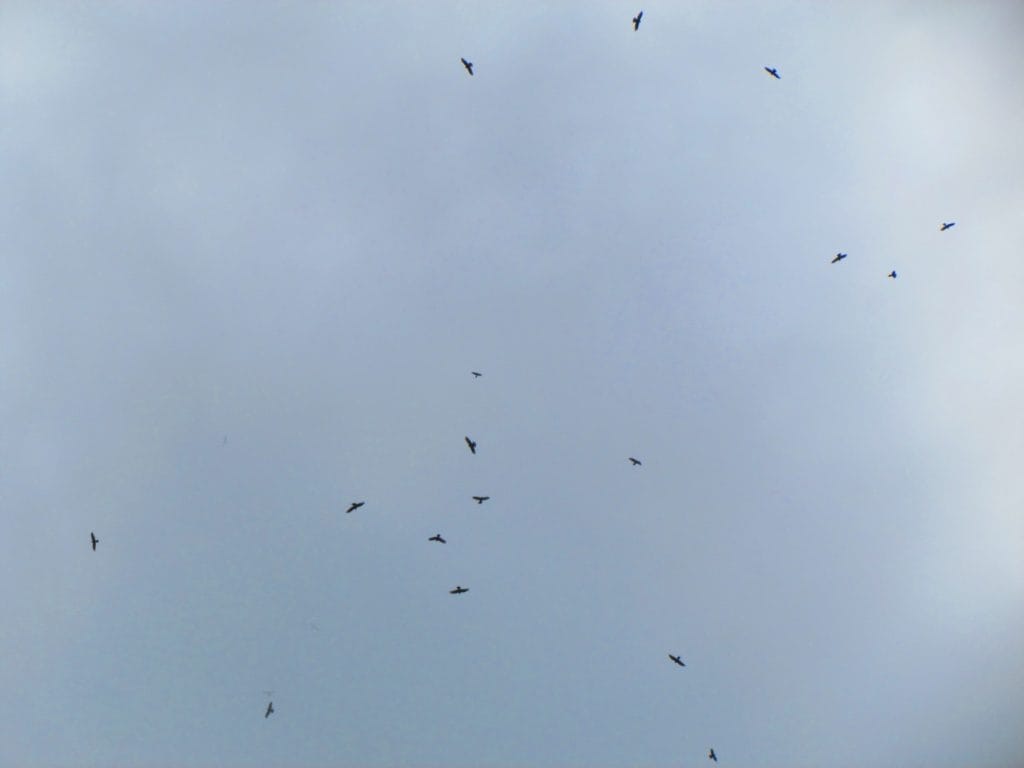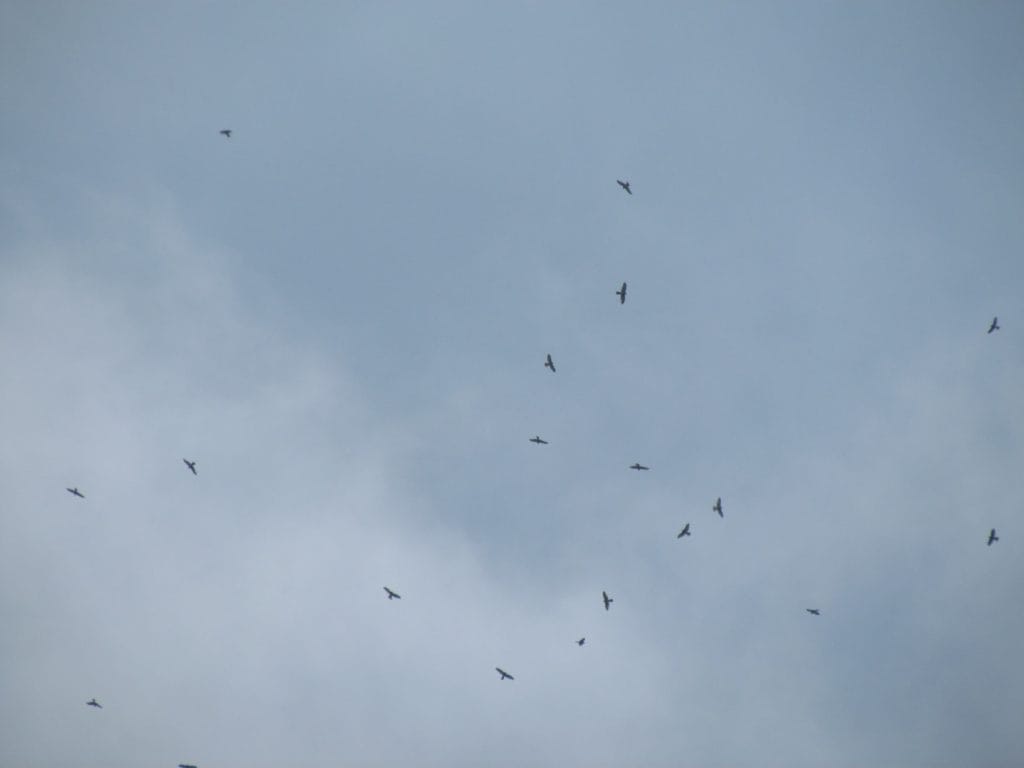by Linda Gocon
Last March, my husband Manny and I were leisurely eating breakfast at the Martessem Resort in the mountains of Tanay, Rizal when something caught my eye. I leaped up, almost spilling our coffee, and shouted, “Here they come!” A kettle of Grey-faced Buzzards (GFB) was thermalling low over the resort.
I grabbed my binoculars and ran out of the restaurant to start counting. Thirty-two GFBs was a pretty good-sized kettle. I was elated.
In a few minutes, they were quickly heading north on their way to their breeding grounds in Northern Asia.

After years of accompanying me to raptorwatch, Manny was unfazed and kept on eating, resigned to another solitary meal while I gleefully looked for more kettles.
My obsession, or addiction, with raptorwatching began in 2013 when Alex Tiongco and Tere Cervero of the WBCP (Wild Bird Club of the Philippines) obtained permission to go up to the 2nd floor balcony of the PAGASA tower in Tanay to count the migrating raptors passing through in the Spring on their way north to their breeding grounds, and, in the Autumn to their wintering grounds in Indonesia or Malaysia.
Some spend the winter in the Philippines, too.
Back in those early days, the Philippines was a black hole of information for migrating raptors, so the Asian Raptor Research and Conservation Network Symposium (ARRCN) hooked up with Alex and Tere and the club to research the possible flyways that the raptors could be taking.
ARRCN knew that the raptors were exiting Taiwan from the southern tip at Kenting, but from there no one had any idea where they were entering the Philippines nor where they were going from there. They guessed they were probably passing over the Cordilleras and the Sierra Madre Mountains, but they didn’t know for sure.
Alex and Tere went out to the Sierra Madre in Tanay and spotted some of the GFBs and Chinese Sparrowhawks and so they organized volunteers from the WBCP to sign up every day to count. The ARRCN even paid for the gas for any of us who would volunteer—it was that important to them.
I live in Taytay, Rizal, only 45 minutes away, so on free days I would go out and help. Others who joined were Trinket and Adri Constantino, Randy and Marla Weisser, Bryan Ellis and Jelaine Gan, who was just a teenager back then.
The first time I went was during the Autumn migration of 2013, when the raptors are heading south. The small Chinese Sparrowhawks come through in September and the larger GFB’s in October. This was October and I couldn’t spot anything; I had no idea what I was looking for.
Then in April, I was with Randy and Marla when Randy pointed saying, “I think I see one.” It was coming in low and against the trees which made it diificult to see (they’re easier to see when they’re against the white clouds). The rest of us finally saw it, a Chinese Sparrowhawk, white underneath with black wingtips. It was followed by 3 others and eventually more until they formed a kettle. They began thermalling, spiralling higher and higher like a tornado and then took off north like bullets; they had hit the thermals and jet stream.
What a thrill!

After 10-15 minutes, another kettle came through. Some kettles combined with others forming groups of 150-200 individuals all thermalling up into the clouds where they would then shoot off to the north. Right on their heels would be another kettle. It began to be difficult to count, there were so many and on every side of the tower. We spread out and stood on each side so we wouldn’t miss any.
Thankfully, the tower has a 360 degree platform with a partial roof which we would camp out under. Randy and Marla had brought lawn chairs and pillows and comfortably reclined all day while searching the skies. We all brought snacks and drinks to share.
It was always a thrill when one of us would spot a kettle.
Helping the others find it, though, was a challenge.
“See the triangular mountain peak on the opposite ridge behind the top of the PAGASA antennae with the big fluffy cloud and the long grey cloud above it? Now pan to the right and you’ll spot the kettle.”
Looking through the binoculars, they looked like little black dots against the clouds. Sometimes, though, they would fly right overhead.
Our largest counts were 2,370 Chinese Sparrowhawks on April 9, 2014 and 2,907 GFBs on March 19, 2015.
The lowest count was zero when I was up there one Autumn with Patty Adversario. We were surrounded by fog, wind and rain huddled together against the wall of the tower trying to keep warm and dry. We looked at each other and said we must be crazy. But, we had fun nonetheless, and as Alex and Tere said, a zero count is still a count.
The Weissers have since retired to their homestate of Alaska. Jelaine is working on her doctorate and got her Masters in researching the Philippine Hawk-eagle. Those early days of raptorwatching got her hooked, too! In fact, she was our records keeper for the raptorwatch.
During the Pandemic, we weren’t allowed into the PAGASA tower, so we migrated next door to the MARTESSEM Resort where the view is just as spectacular and the food is good and reasonably priced. The waiters are now used to our coming and are amazed to see the raptors which they had never noticed before. It’s always fun to point them out to unsuspecting people and to watch their faces light up in wonder.
Despite it being years since my first raptorwatching adventures, the thrill has never worn off. Every Spring and Autumn, you will find me and other club members out in Tanay looking for the migrating raptors, still spellbound at their annual trek to and from their breeding grounds.
